All Images
News Release 10-186
NSF Awards Grants to Study Effects of Ocean Acidification
Projects address concern for acidifying marine ecosystems
This material is available primarily for archival purposes. Telephone numbers or other contact information may be out of date; please see current contact information at media contacts.
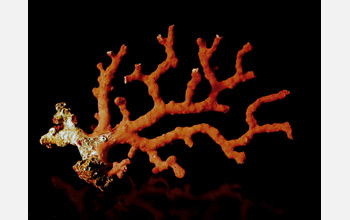
Corallium rubrum and other deep-sea corals are affected by ocean acidification.
Credit: Paolo Montagna, LDEO
Download the high-resolution JPG version of the image. (1.3 MB)
Use your mouse to right-click (Mac users may need to Ctrl-click) the link above and choose the option that will save the file or target to your computer.
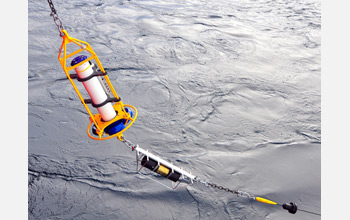
A biogeochemical mooring monitors ocean acidification in the western Arctic Ocean.
Credit: Rachel Fletcher
Download the high-resolution JPG version of the image. (319 KB)
Use your mouse to right-click (Mac users may need to Ctrl-click) the link above and choose the option that will save the file or target to your computer.
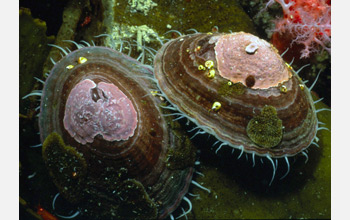
Antarctic limpet Nacella concinna with coralline red algae--both at risk from ocean acidification.
Credit: Dan Martin
Download the high-resolution JPG version of the image. (331 KB)
Use your mouse to right-click (Mac users may need to Ctrl-click) the link above and choose the option that will save the file or target to your computer.
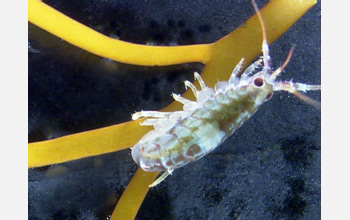
Antarctic amphipod Gondogeneia antarctica perched on brown alga Desmarestia menziesii.
Credit: Maggie Amsler, University of Alabama at Birmingham
Download the high-resolution JPG version of the image. (302 KB)
Use your mouse to right-click (Mac users may need to Ctrl-click) the link above and choose the option that will save the file or target to your computer.
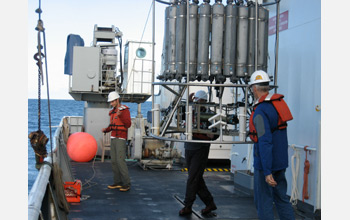
Deploying an instrument to sample seawater at different depths in the Gulf of Alaska.
Credit: Dalin Shi, Princeton University
Download the high-resolution JPG version of the image. (915 KB)
Use your mouse to right-click (Mac users may need to Ctrl-click) the link above and choose the option that will save the file or target to your computer.
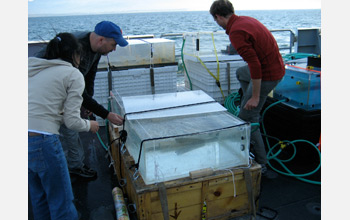
Setting up incubation experiments to study phytoplankton response to ocean acidification.
Credit: Dalin Shi, Princeton University
Download the high-resolution JPG version of the image. (951 KB)
Use your mouse to right-click (Mac users may need to Ctrl-click) the link above and choose the option that will save the file or target to your computer.
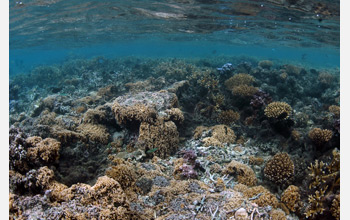
In acidifying oceans, the fate of coral reefs is in question.
Credit: Robert Carpenter, Cal State-Northridge
Download the high-resolution JPG version of the image. (1.1 MB)
Use your mouse to right-click (Mac users may need to Ctrl-click) the link above and choose the option that will save the file or target to your computer.
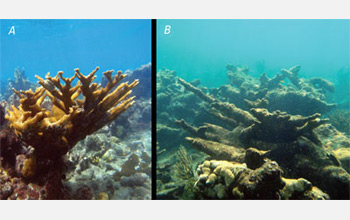
In "A," healthy coral reef grows; in "B," the reef is degraded by acid waters.
Credit: USGS
Download the high-resolution JPG version of the image. (29 KB)
Use your mouse to right-click (Mac users may need to Ctrl-click) the link above and choose the option that will save the file or target to your computer.
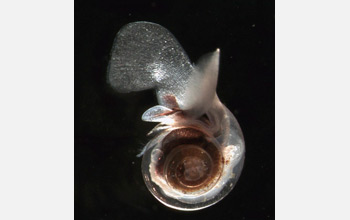
Pteropods' ability to form shells may be greatly impaired by ocean acidification.
Credit: Russ Hopcroft, UAF/NOAA
Download the high-resolution JPG version of the image. (142 KB)
Use your mouse to right-click (Mac users may need to Ctrl-click) the link above and choose the option that will save the file or target to your computer.
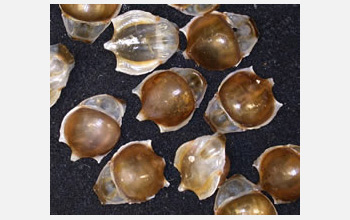
Shells of "sea butterflies," or pteropods; they may not make shells in acidifying oceans.
Credit: Commonwealth of Australia
Download the high-resolution JPG version of the image. (19 KB)
Use your mouse to right-click (Mac users may need to Ctrl-click) the link above and choose the option that will save the file or target to your computer.
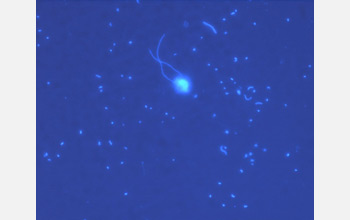
Epifluorescence microscope image of bacterioplankton and a flagellate in seawater.
Credit: Craig Carlson, UCSB
Download the high-resolution JPG version of the image. (122 KB)
Use your mouse to right-click (Mac users may need to Ctrl-click) the link above and choose the option that will save the file or target to your computer.
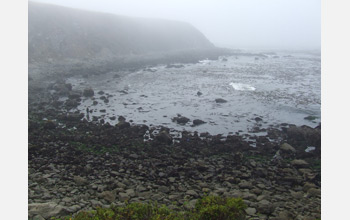
Ocean acidification study field site at Fort Ross, California, on a foggy day.
Credit: Lina Ceballos, SFSU
Download the high-resolution JPG version of the image. (1.3 MB)
Use your mouse to right-click (Mac users may need to Ctrl-click) the link above and choose the option that will save the file or target to your computer.
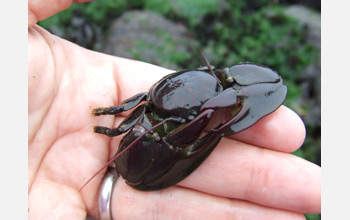
An adult porcelain crab, subject of study in one of NSF's ocean acidification awards.
Credit: Lina Ceballos, SFSU
Download the high-resolution JPG version of the image. (1.3 MB)
Use your mouse to right-click (Mac users may need to Ctrl-click) the link above and choose the option that will save the file or target to your computer.
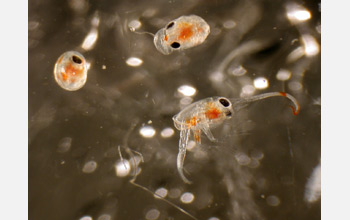
Porcelain crabs just before and after hatching.
Credit: Jonathon Stillman, SFSU
Download the high-resolution JPG version of the image. (654 KB)
Use your mouse to right-click (Mac users may need to Ctrl-click) the link above and choose the option that will save the file or target to your computer.


